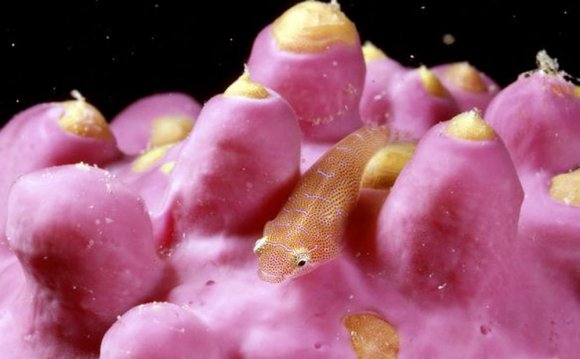
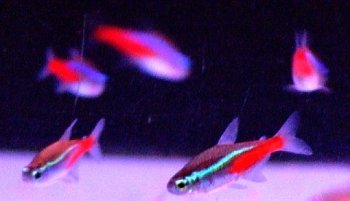
Brief Description
Most likely you came here searching for compatible aquarium fish, you're in the right place! Firstly you should go through the article below and once done you should also visit the following page: Fish - search function which allows one to find good species for a fish tank! For instance you may list all fish that are peaceful and accept pH of 7. Of course you should be more selective though and find fish depending on size, hardness, origin other characteristics so the chosen species will fit your tank perfectly! If you're not sure about compatibility anyway, feel free to post your question at the bottom of this page!
Introduction
There are many factors to consider when deciding which livestock you are going to add to your tank. Not only the tanks size, but you need to make sure that the different species you are going to buy will get along with each other. Most aquarists nowadays set up community tanks with a mixed variety of fish so this second point could be crucial in determining which fish to add.
Tank size does play a major part; you certainly would not contemplate adding a large 6 inch (~15 cm) or over fish to a relatively small tank, providing it with no swimming room. Many species of fish become territorial over time, defending their space in the tank, thus resulting in injuries to the other tank mates; this is not something that keepers like to see.
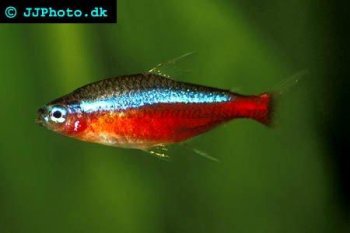 There is a golden rule as well that most keepers stick to “don’t add fish that are small enough to fit into another fish’s mouth, they will eat it”. This cannot be ignored! All fish have different temperaments, even within the same species. Malawis for example are constantly battling in the tank to obtain their own territories, as do some of the South American cichlids, yet some other cichlids can live perfectly happy with each other if a correct balance is ensured by careful livestock selection.
There is a golden rule as well that most keepers stick to “don’t add fish that are small enough to fit into another fish’s mouth, they will eat it”. This cannot be ignored! All fish have different temperaments, even within the same species. Malawis for example are constantly battling in the tank to obtain their own territories, as do some of the South American cichlids, yet some other cichlids can live perfectly happy with each other if a correct balance is ensured by careful livestock selection.
There are many, reference books available, websites on the net, plus many forums on the net where the relevant information can be obtained so that your fish will live in conditions that will provide them with everything they need. There is a forum on this site that is available to everyone, full of information and helpful advice will be given for everyone, even down to the most inexperienced keepers. This can be found at forum.aqua-fish.net.
All of the books or reference sites will include information mainly on the required pH, water temp, dietary needs, etc. Some species of fish prefer to lead solitary lives, definitely not a good choice for a community tank as they will hide and feel intimidated by other fish, even fish from the same species. Some fish are classed as timid fish, not the same as solitary fish, these like to be kept in shoals, at least including 10 members so that they feel secure and will be more at ease in the tank.
The order that fish are added to the tank can also affect the balance, always add the peaceful species first, and then add the more aggressive species later, giving the more timid fish time to settle in.
I will now try to give you some ideas as to which fish to add for a community tank, this is purely a rough guide, at the end of the day, only you can decide which fish to add.
Barbs, Rasboras:-
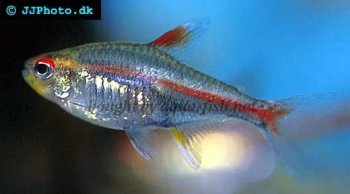 These are great little fish to add, although not all barbs are as well adapted to living in communities as others. I once added some green tiger barbs and they created havoc with the other fish, yet when I moved them into their own tank, they were excellent fish to keep. Cherry barbs (Barbus Titteya), Harlequin rasboras (Trigonostigma heteromorpha), are really good examples of community dwellers. These are middle feeders and are extremely tolerant of other fish.
These are great little fish to add, although not all barbs are as well adapted to living in communities as others. I once added some green tiger barbs and they created havoc with the other fish, yet when I moved them into their own tank, they were excellent fish to keep. Cherry barbs (Barbus Titteya), Harlequin rasboras (Trigonostigma heteromorpha), are really good examples of community dwellers. These are middle feeders and are extremely tolerant of other fish.
Tetras:-
There are so many species of tetras that are compatible in a community tank, making these one of the most popular additions to most keeper’s tanks. I will list a few of the most commonly available on the market. Neon tetras are without a doubt the most sought after breed to buy but beware, they are classed as a timid fish and need good water quality, because of this they should not be added to a new set up, better to wait until the water has had time to mature.
Cardinal tetras are also well sought after, their colouration covering the whole length of the body. These are middle feeders and are best kept in shoals of at least 10 fish.
Glowlight tetras are a beautiful fish that reflect the light with great effect, another great addition to your tank.
There are far too many tetras to give you a complete list but these fish will mix and match in your tank.
Another important species of fish to keep in your tank are the bottom feeders as these will swim about on your substrate, eating all of the food that has managed to land there. Catfish are ideal, but remember, they also need their own food adding to the tank to keep them healthy. Also remember not to use too sharp a substrate as this can cause them damage while they are mopping up. My favourite type of catfish has to be the corydoras, of which there are quite a few species available, all with their own unique markings. One example of these is the Corydoras adolfoi - this is my particular favourite.
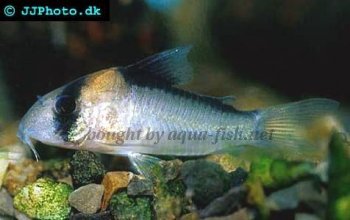 Another peaceful catfish to add is the bristle nose, excellent algae eater, which means you can save a lot of time, not having to clean your tank so often.
Another peaceful catfish to add is the bristle nose, excellent algae eater, which means you can save a lot of time, not having to clean your tank so often.
A lot of keepers add cichlids to their tanks, which is fine if selected carefully, normally angels and gouramies. A word of warning with these, if they pair up ready to breed, they will become very territorial in order to keep their space, the result of which could result in injuries to the other occupants.
Mollies and platys make good community fish, the only drawback being, if you are adding live plants, they may see them as food and strip down your tank in no time.
In every species of fish, there are always rogue members that could act completely out of character. Just because you have kept a male platy with no problems and have to replace it with another one, the new arrival may not act the same in the tank, so be prepared for this.
Experience in buying fish is soon gained, so plenty of research before buying is the best way to maintain a happy, healthy tank.
Never, ever impulse buy!!!
Very important thing about fish compatibility
The below-shown answer was moved here from
Answer: In the aquarium hobby, except for some few species, every fish is peaceful toward other species or toward members of the same species. The problem is that you cannot expect 2 or more fish which are 50cm (~20 inches) long to live happily in an aquarium that's 150cm (~59 inches) long. Nor if these fish require territories.
You should always check how fish behave in shops and you should always bear in mind that fish grow. What is a beautiful (and peaceful) 3 cm (1.18 inch) fish, can be an aggressive predator once it reaches adult age.
Fish don't fight because they want to kill each other. Even males of the Betta splendens species live in peace in the wild. This is because of the Alpha male who is something like "boss of the bosses" and whose presence leads to a peaceful community.
Unlike nature, in aquariums it's hard to copy these natural conditions.
So... Don't think that every combination of fishes is going to create a community tank of your dreams.
If possible, avoid keeping small and big fish together, avoid overcrowding, and avoid anything that can be negative in terms of creating territories.









